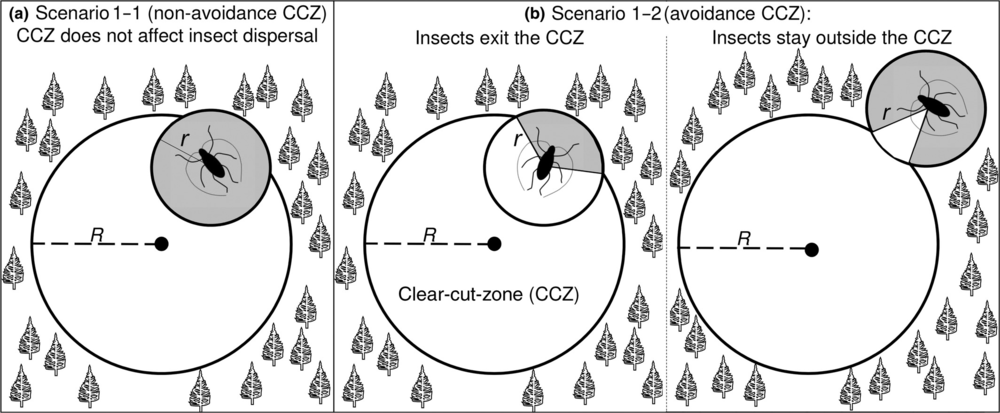holistic management of emerging forest pests and diseases
New research questions the effectiveness of clear-cutting for eradicating pine wood nematode
An article recently published in the Journal of Applied Ecology analyses the effectiveness of clear-cutting as a method for combating the spread of pine wood nematode (PWN) in non-fragmented forests. The paper called "Effectiveness of clear‐cuttings in non‐fragmented pine forests in relation to EU regulations for the eradication of the pine wood nematode" presents a model aiming to analyse whether the EU regulation for combatting PWN spread is effective.
The pine wood nematode Bursaphelenchus xylophilus is a type of nematode residing in pine trees, which is being transported from one tree to another via insects. PWN is known to cause pine wilt disease, which could lead to tree death in just a couple of months. The EU regulation states that upon discovery of an infected tree a clear-cut of 500m radius must be conducted.

Illustration of the effects of the clear‐cutting zone (CCZ) on the dispersal behaviour of insect vectors in different scenarios. Source: Robinet et al. (2020). Effectiveness of clear‐cuttings in non‐fragmented pine forests in relation to EU regulations for the eradication of the pine wood nematode. Journal of Applied Ecology, 57/3, pp. 460-466
The authors of the article, amongst whom are renowned HOMED researchers, implement a model for PWN spread, and results of the study show that clear‐cutting of a 500 m radius is not effective in non‐fragmented pine forests. The calculations show that implementing a 500 m radius clear-cut reduces the number of PWN transmissions by only 0.6%–11.5%. Authors calculate that in order for clear-cutting to be effective and a significant reduction of the number of transmissions to become present, the clear-cut radius should be increased to 14 - 38 km, which in the words "is neither technically, nor ethically feasible".
Click here to access the paper.